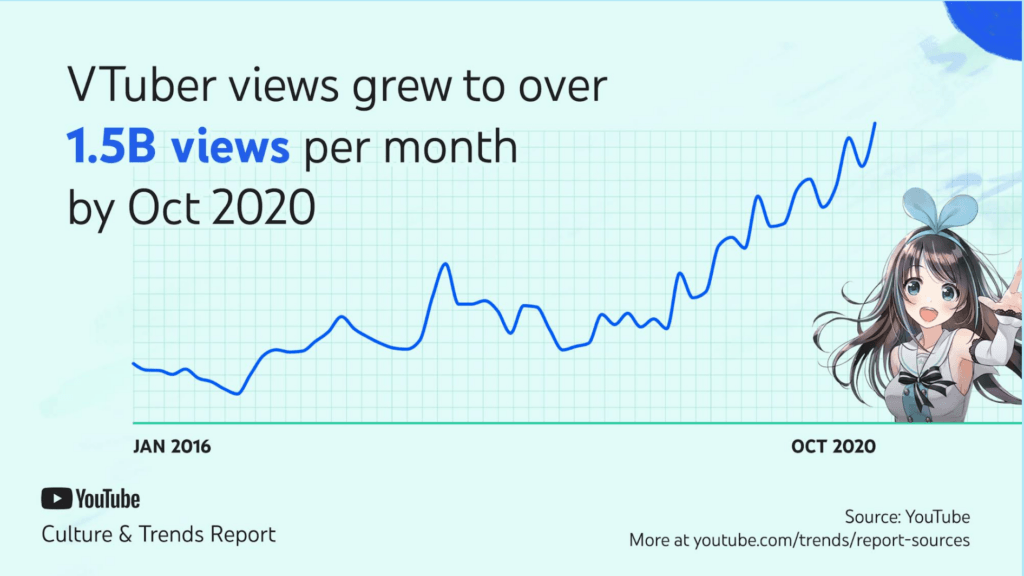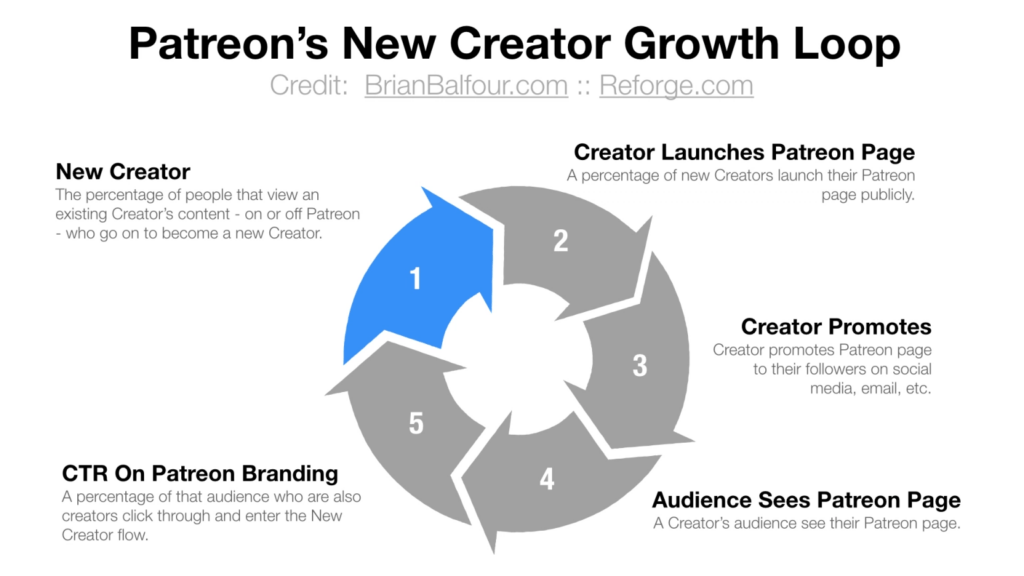Patreon: The Platform for the New Age of Creators (for Now?)

Can Patreon fulfill its mission to get artists and creators paid, but do so sustainably so the company also gets paid?
5 times. This is the number of times I received a request from creators to support their Patreon yesterday.
During the COVID-19 pandemic, the amount of time I have spent consuming online creative content has skyrocketed. From frame-by-frame video analyses of Marvel TV show WandaVision, to podcasts that offer deep explorations of unsolved crimes — the consumption of content by individual creators has increasingly become a part of my new normal.
 As it turns out, I’m not the only with such changing habits. A recent YouTube Culture & Trends Report declared we are in “a new age of creators,” where “interactive audiences” seek connection through content. The proof is in the data — YouTube views grew to 1.5B per month by October 2020.
As it turns out, I’m not the only with such changing habits. A recent YouTube Culture & Trends Report declared we are in “a new age of creators,” where “interactive audiences” seek connection through content. The proof is in the data — YouTube views grew to 1.5B per month by October 2020.
And yet, though platforms like YouTube can lead to substantial followings for these solo creators, the revenue generated from millions of views on original content is often not enough to compensate for the time it took to create it.
Jack Conte, CEO and Co-Founder of Patreon, discussed in a recent NPR How I Built This episode that he started Patreon to address exactly this problem: to get artists and creators paid. A former full time musician himself, Conte recounted the traumatic shift for musicians who went from driving revenue primarily through iTunes MP3 sales to needing to drive revenue through streaming applications like Spotify. Without a change in his audience size or reach, he watched his “income start to evaporate” — from making thousands of dollars a month to earning only a fraction of the revenue.
To support creators like himself, Conte (along with co-founder Sam Yam) started Patreon — a platform that connects creators with their most passionate fans. Through Patreon, fans (or “patrons”) can directly sponsor artists they love for just a few dollars a month, and creators are provided the tools to manage and continually engage their fan base in return.
The thesis for Patreon hinges on the untapped economic value of so-called “mid-tail creators” — creators making $1k-$500k per month. Conte sees such creators as “underserved small businesses” not being chased by top talent managers because they don’t command enough earning potential in their eyes. Without time to handle business, these mid-tail creators are then left with advertising as a reasonably simple, but unsubstantial revenue model. Conte believes that membership is a revenue model especially well-suited for content creators because it unlocks value: content creators receive stable recurring revenues, and loyal fans are able to continuously consume content and maintain an ongoing relationship with the creators they love.
Patreon has seen a number of benefits with its current platform model.
New creator acquisition has proven to be cost efficient for Patreon due to the organic viral acquisition loop that occurs, more akin to a social networking platform than a traditional SaaS start-up. In this loop, Patreon gains new creators because each one promotes their Patreon to their fan base. The fans of creators naturally include other creators, and after hearing about the potential to earn subscription revenue from fans, many then join Patreon themselves, and so the cycle continues.
Patreon further has demonstrated high retention among the mid-tail creators the platform seeks to serve. Conte noted that “the thing that is really sticky about Patreon is that it’s just so hard to move 700 credit cards from one spot to another with consumers. It’s nearly impossible.” Without access to payment data, switching costs are quite high for creators once they have built their paying fan base in Patreon.
As can be seen below, Patreon has seen both steady creator and pledge growth since its inception (with a notable bump at the onset of the pandemic).
But Patreon is not without its significant challenges.
One of the biggest challenges facing Patreon was how to take advantage of the platform’s cross-side network effects. Early iterations of Patreon recommended creators to patrons based on the creators they supported, a feature that was actually considered to be highly damaging by the creators they sought to serve — as they were introducing their fans to potential competitors. Patreon has accordingly shifted its product strategy to become essentially a CRM for their creators, noting that Patreon is “not solving helping everybody find new fans” and that “these are hard problems that other companies do way better than us right now actually.”
Patreon additionally has a business model challenge. Patreon initially charged creators only 10% of their revenues through the platform — divided into a 5% platform fee and a 5% payment processing fee. However, Conte admitted that this fee structure simply wasn’t sustainable for the business, and Patreon recently introduced tiered pricing (see left) along different feature sets to begin addressing this challenge. This seems to be a promising development for Patreon, as according to their website, the average amount spent by a patron is now $12 per month — close to a Netflix subscription
However, Patreon has recently been confronted with the fact that the overwhelming majority of creators on Patreon can’t get to $500 in revenue per month on the platform, below the mid-tail creator threshold of $1k. In fact, Patreon could lose roughly 90% of its active creators with relatively limited effect on its revenues. The strategy here quickly becomes complicated for Patreon. Patreon could focus product development on tools to help creators who haven’t reached the mid-tail threshold find more fans, but Conte has been explicit that he does not want to play in this space and Patreon’s creators discouraged such efforts prior. On the flip side, optimizing the platform for their best mid-tail customers might seemingly be against the spirit and mission of the company to help individual creators when they need support the most.
Amidst these challenges, Patreon believes its future is bright, as it eyes an IPO as early as this year. However, competition is fierce, and I worry about Patreon’s ability to stay competitive following Twitter’s recent launch of Super Followers to help its creators monetize their content.
Regardless of the competitive outcome here, there is no question that Patreon demonstrated an ability to identify an unmet need and meet the moment by providing the mechanism for overlooked creators to sustain their craft during the “new age of creators.” These creators are not being overlooked anymore, and with other tough competitors joining the game, it will be fascinating to see who ultimately wins over this now coveted group.
References
Balfour, B., 2021. Inside the 6 Hypotheses that Doubled Patreon’s Activation Success. [online] Brian Balfour. Available at: <https://brianbalfour.com/essays/patreon-onboarding-growth> [Accessed 2 March 2021].
Barrie, T., 2021. Patreon CEO Jack Conte’s tips for success. [online] British GQ. Available at: <https://www.gq-magazine.co.uk/lifestyle/article/patreon-ceo-jack-conte> [Accessed 2 March 2021].
Graphtreon. 2021. Patreon Creators Statistics: Graphs + Analysis. [online] Available at: <https://graphtreon.com/patreon-stats> [Accessed 2 March 2021].
Knepper, B., 2021. No one makes a living on Patreon. [online] The Outline. Available at: <https://theoutline.com/post/2571/no-one-makes-a-living-on-patreon> [Accessed 2 March 2021].
Matican, R. and Efrati, A., 2021. Patreon Considers Public Listing as Soon as This Year. [online] The Information. Available at: <https://www.theinformation.com/articles/patreon-considers-public-listing-as-soon-as-this-year> [Accessed 2 March 2021].
Matney, L., 2021. Twitter’s ‘Super Follow’ Creator Subscription takes Shots at Substack and Patreon. [online] Techcrunch.com. Available at: <https://techcrunch.com/2021/02/25/twitters-super-follow-creator-subscription-takes-shots-at-substack-and-patreon/> [Accessed 2 March 2021].
Patreon Team, 2021. Millions and Billions | Celebrating Patrons, Creators, and Major Milestones. [online] Blog.patreon.com. Available at: <https://blog.patreon.com/millions-and-billions-celebrating-patrons-creators-major-milestones> [Accessed 2 March 2021].
Patreon, 2021. [online] Patreon. Available at: <https://www.patreon.com/> [Accessed 2 March 2021].
Peckham, E., 2021. The Business of Patreon: Building a New Economy for Creators Requires a Focused Business Strategy. [online] Techcrunch.com. Available at: <https://techcrunch.com/2019/02/12/patreon-business/> [Accessed 2 March 2021].
Raz, G., 2021. How I Built This with Guy Raz – Patreon: Jack Conte and Sam Yam. [online] Npr.org. Available at: <https://www.npr.org/2021/01/08/954876726/patreon-jack-conte-and-sam-yam> [Accessed 2 March 2021].
Robertson, A., 2021. Patreon launches “Pro” and “Premium’ tiers to compete with Facebook and YouTube. [online] The Verge. Available at: <https://www.theverge.com/2019/3/19/18272636/patreon-service-tiers-lite-pro-premium-jack-conte-platform-sustainable> [Accessed 2 March 2021].
Spangler, T., 2021. Patreon Raises $90 Million, Hits $1.2 Billion Valuation – Variety. [online] Variety.com. Available at: <https://variety.com/2020/digital/news/patreon-raises-90-million-funding-valuation-1234756351/> [Accessed 2 March 2021].







I think it’s worth mentioning too that Patreon has a major free speech problem. Several conservative content creators have been de-platformed leading to other services filling that space. The company’s clear political bias track with other major technology platforms, so this is not necessarily unique to Patereon. Notable public figures have chose to leave the platform in solidarity with free speech advocates and I personally believe that this is another major long term risk to Patreon.
Thank you for raising this.
I actually would go one step broader and argue that overall platform governance is a major risk to Patreon. In addition to the issue you raised here, the company has received quite a bit of scrutiny in its history around several aspects of its community guidelines and content policy — including its definitions of and enforcement of “hate speech,” “harassment,” “disinformation,” and more. There are too many articles to list here on the topic, but a quick Google search will show the breadth of the challenge for Patreon.
In short — you’re right that governance couldn’t be more relevant for platforms like Patreon today, and its management of its content policy could have a significant impact on the platform’s ability to attract and retain creators and users alike.